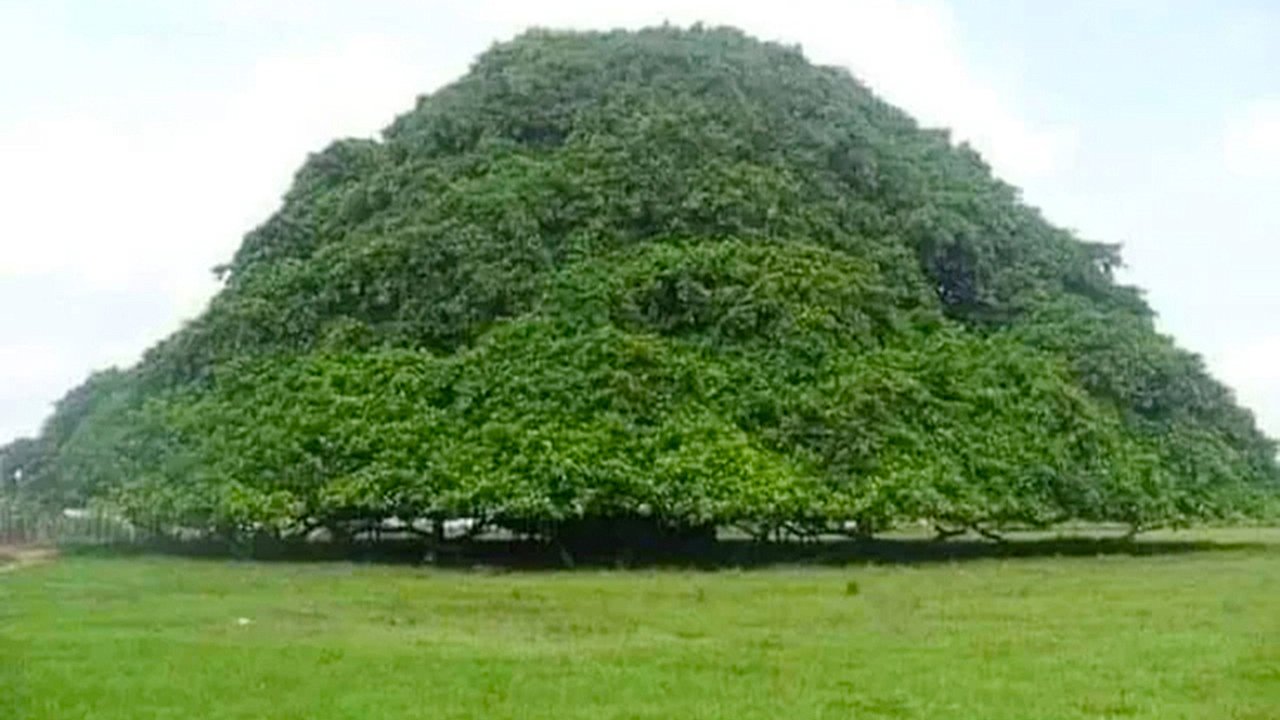Unlike other contenders like the famous General Sherman tree in the U.S., this giant isn't a singular organism but a fusion of six fig trees, united over decades into a massive living structure.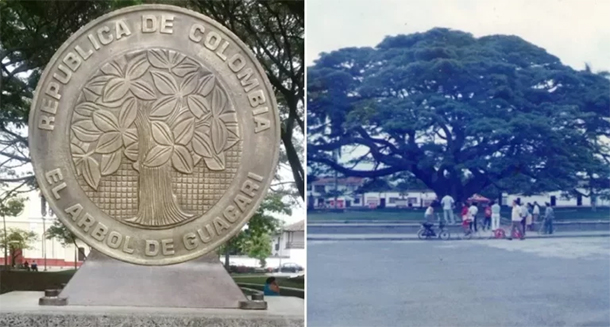 The original ‘The Tree of Guacarí’ – a different tree of a different species, nevertheless looking similar. Image credit: SiembraThis natural colossus, often mistaken for a hill when viewed from afar, spans an alleged 30 meters in height and 75 meters in diameter. While these measurements are difficult to verify, its immense canopy and extraordinary form leave visitors in awe.A Tree of Unmatched Scale
The original ‘The Tree of Guacarí’ – a different tree of a different species, nevertheless looking similar. Image credit: SiembraThis natural colossus, often mistaken for a hill when viewed from afar, spans an alleged 30 meters in height and 75 meters in diameter. While these measurements are difficult to verify, its immense canopy and extraordinary form leave visitors in awe.A Tree of Unmatched Scale
Locally called "The Giant Fig of San Marcos," this tree is not just one plant but a living collective. The story began in 1964 on the Alejandría farm, where a yellow cedar sapling was surrounded by six fig tree rods to protect it from grazing cattle. Ironically, the fig trees thrived, outgrew the cedar, and eventually absorbed it. Over time, their aerial roots stretched downward, forming natural supports that allowed the tree to expand horizontally and vertically.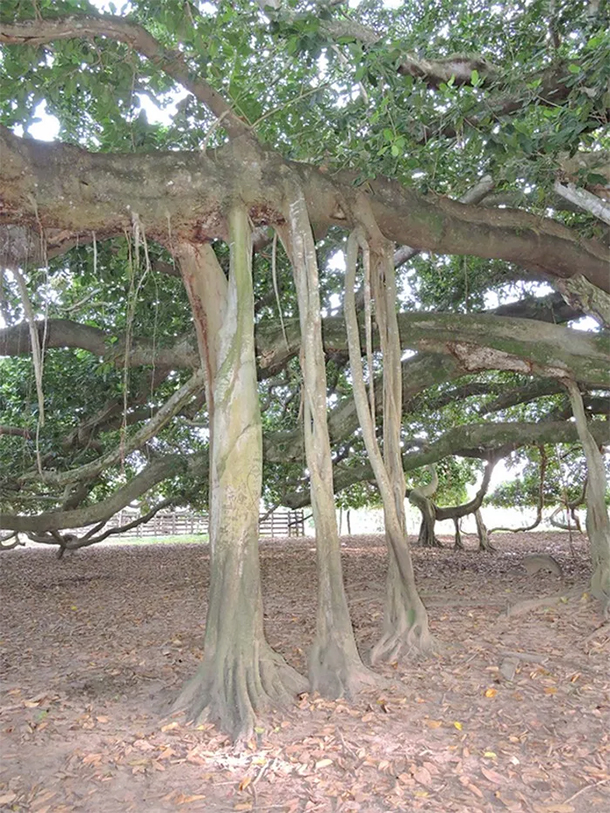 The foliage is so huge, the tree has grown pillars to support it. Image credit: Viajar en VeranoFrom beneath its sprawling canopy, the fig tree resembles the interior of a massive cathedral, with its aerial roots acting as columns supporting a verdant ceiling. The dense foliage creates an almost mythical atmosphere, offering visitors a sense of peace and connection with nature.A Symbol of Strength and Adaptation
The foliage is so huge, the tree has grown pillars to support it. Image credit: Viajar en VeranoFrom beneath its sprawling canopy, the fig tree resembles the interior of a massive cathedral, with its aerial roots acting as columns supporting a verdant ceiling. The dense foliage creates an almost mythical atmosphere, offering visitors a sense of peace and connection with nature.A Symbol of Strength and Adaptation
This tree is more than a botanical spectacle—it’s a symbol of nature’s resilience and ingenuity. Its aerial roots, often referred to as "feet," allow the tree to "walk" by finding new ground to stabilize itself and absorb nutrients. This adaptation has led locals to call it “The Tree That Walks,” as it continually expands its reach.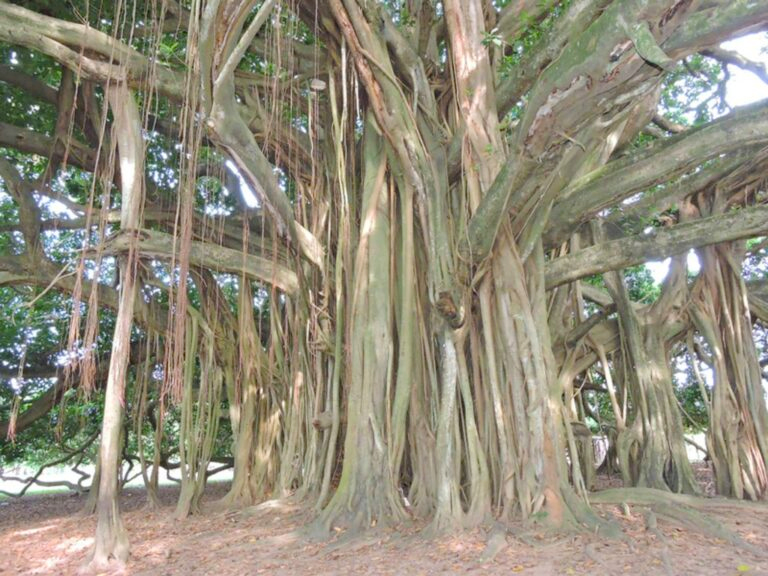 It’s not just one tree, but six trees joined together. Image credit: Viajar en VeranoAn Icon of Colombia
It’s not just one tree, but six trees joined together. Image credit: Viajar en VeranoAn Icon of Colombia
The fig tree stands near San Marcos, a small town on Colombia’s Atlantic coast. Approximately three kilometers from the Alejandría farm, visitors can spot the “green mountain” from afar. Under its expansive canopy, one feels both humbled and inspired by its size and energy.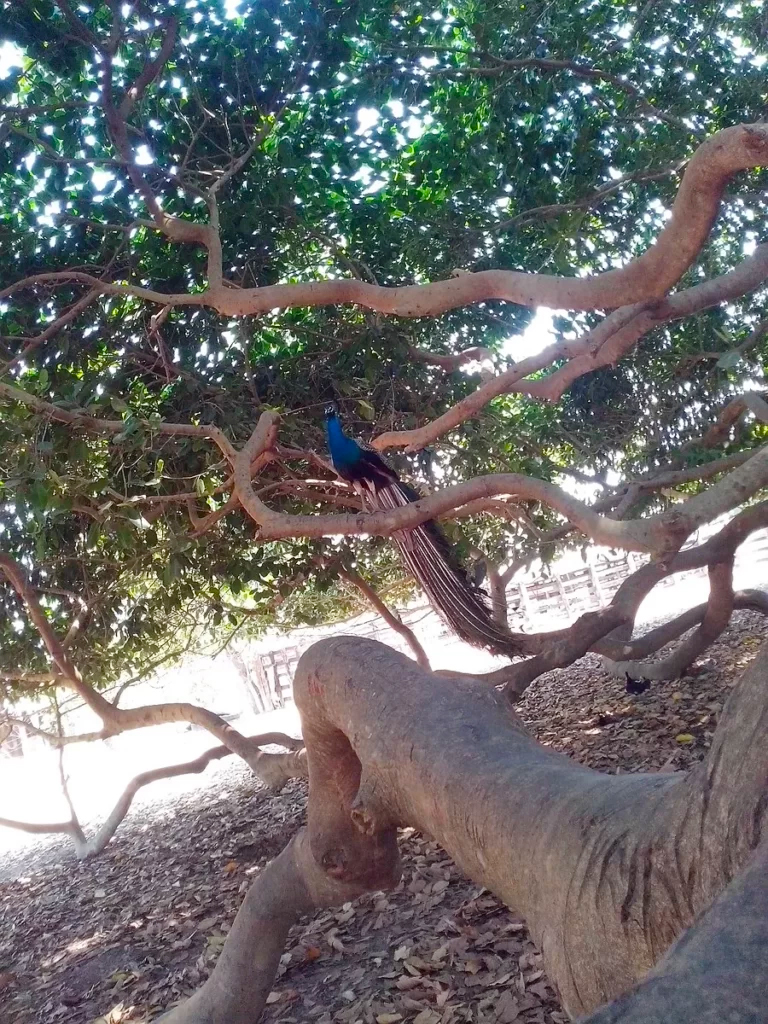 The branches bend to kiss the ground – and give shelter to a peacock. Image credit: Wbeimar Muñoz GonzàlezIn the 1990s, a similar tree, the Samán of Guacarí—a massive Samanea saman featured on the Colombian 500 peso coin—was lost to time. But the Giant Fig of San Marcos endures as a living monument to the country’s natural heritage.A Must-Visit for Nature Enthusiasts
The branches bend to kiss the ground – and give shelter to a peacock. Image credit: Wbeimar Muñoz GonzàlezIn the 1990s, a similar tree, the Samán of Guacarí—a massive Samanea saman featured on the Colombian 500 peso coin—was lost to time. But the Giant Fig of San Marcos endures as a living monument to the country’s natural heritage.A Must-Visit for Nature Enthusiasts
If you’re planning a trip to Colombia’s Atlantic coast, don’t miss the chance to experience the Giant Fig of San Marcos. Its shade offers a retreat from the tropical sun, while its grandeur leaves a lasting impression. The tree is a reminder of nature’s remarkable ability to thrive and adapt.Let’s hope this natural wonder continues to stand tall for generations to come, inspiring those who visit to marvel at its beauty and resilience.
 The original ‘The Tree of Guacarí’ – a different tree of a different species, nevertheless looking similar. Image credit: SiembraThis natural colossus, often mistaken for a hill when viewed from afar, spans an alleged 30 meters in height and 75 meters in diameter. While these measurements are difficult to verify, its immense canopy and extraordinary form leave visitors in awe.A Tree of Unmatched Scale
The original ‘The Tree of Guacarí’ – a different tree of a different species, nevertheless looking similar. Image credit: SiembraThis natural colossus, often mistaken for a hill when viewed from afar, spans an alleged 30 meters in height and 75 meters in diameter. While these measurements are difficult to verify, its immense canopy and extraordinary form leave visitors in awe.A Tree of Unmatched ScaleLocally called "The Giant Fig of San Marcos," this tree is not just one plant but a living collective. The story began in 1964 on the Alejandría farm, where a yellow cedar sapling was surrounded by six fig tree rods to protect it from grazing cattle. Ironically, the fig trees thrived, outgrew the cedar, and eventually absorbed it. Over time, their aerial roots stretched downward, forming natural supports that allowed the tree to expand horizontally and vertically.
 The foliage is so huge, the tree has grown pillars to support it. Image credit: Viajar en VeranoFrom beneath its sprawling canopy, the fig tree resembles the interior of a massive cathedral, with its aerial roots acting as columns supporting a verdant ceiling. The dense foliage creates an almost mythical atmosphere, offering visitors a sense of peace and connection with nature.A Symbol of Strength and Adaptation
The foliage is so huge, the tree has grown pillars to support it. Image credit: Viajar en VeranoFrom beneath its sprawling canopy, the fig tree resembles the interior of a massive cathedral, with its aerial roots acting as columns supporting a verdant ceiling. The dense foliage creates an almost mythical atmosphere, offering visitors a sense of peace and connection with nature.A Symbol of Strength and AdaptationThis tree is more than a botanical spectacle—it’s a symbol of nature’s resilience and ingenuity. Its aerial roots, often referred to as "feet," allow the tree to "walk" by finding new ground to stabilize itself and absorb nutrients. This adaptation has led locals to call it “The Tree That Walks,” as it continually expands its reach.
 It’s not just one tree, but six trees joined together. Image credit: Viajar en VeranoAn Icon of Colombia
It’s not just one tree, but six trees joined together. Image credit: Viajar en VeranoAn Icon of ColombiaThe fig tree stands near San Marcos, a small town on Colombia’s Atlantic coast. Approximately three kilometers from the Alejandría farm, visitors can spot the “green mountain” from afar. Under its expansive canopy, one feels both humbled and inspired by its size and energy.
 The branches bend to kiss the ground – and give shelter to a peacock. Image credit: Wbeimar Muñoz GonzàlezIn the 1990s, a similar tree, the Samán of Guacarí—a massive Samanea saman featured on the Colombian 500 peso coin—was lost to time. But the Giant Fig of San Marcos endures as a living monument to the country’s natural heritage.A Must-Visit for Nature Enthusiasts
The branches bend to kiss the ground – and give shelter to a peacock. Image credit: Wbeimar Muñoz GonzàlezIn the 1990s, a similar tree, the Samán of Guacarí—a massive Samanea saman featured on the Colombian 500 peso coin—was lost to time. But the Giant Fig of San Marcos endures as a living monument to the country’s natural heritage.A Must-Visit for Nature EnthusiastsIf you’re planning a trip to Colombia’s Atlantic coast, don’t miss the chance to experience the Giant Fig of San Marcos. Its shade offers a retreat from the tropical sun, while its grandeur leaves a lasting impression. The tree is a reminder of nature’s remarkable ability to thrive and adapt.Let’s hope this natural wonder continues to stand tall for generations to come, inspiring those who visit to marvel at its beauty and resilience.
